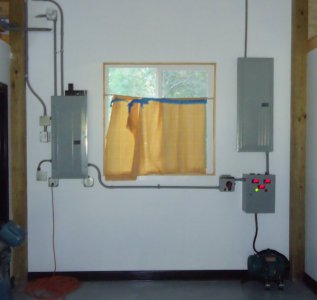No, I've got several true RMS meters (Fluke 87V, Agilient U1252B) and they all read 120v/240v with a volt or two. If you're reading 220V, that's at the low end of what the utility should be delivering.
Away from the panel, you can get some voltage sag if there's heavy loading on the line.
What everyone said above about phases and legs. Nominally the US 240VAC lines have two phases, but since they are 180 degrees apart, you can't use them to start a motor directly. There's a dead spot and no preferred direction.
It's not really a summing issue. If you sum all three phases together from the power company you'd get 0V, too. That's not true with RPC power, since two phases come directly from the mains. The generated third phase (wild leg) is 90 degree apart (relative to ground) and the vector sum of the three winds up at 120V * tan 30 ~= 70VAC.
Away from the panel, you can get some voltage sag if there's heavy loading on the line.
What everyone said above about phases and legs. Nominally the US 240VAC lines have two phases, but since they are 180 degrees apart, you can't use them to start a motor directly. There's a dead spot and no preferred direction.
It's not really a summing issue. If you sum all three phases together from the power company you'd get 0V, too. That's not true with RPC power, since two phases come directly from the mains. The generated third phase (wild leg) is 90 degree apart (relative to ground) and the vector sum of the three winds up at 120V * tan 30 ~= 70VAC.


